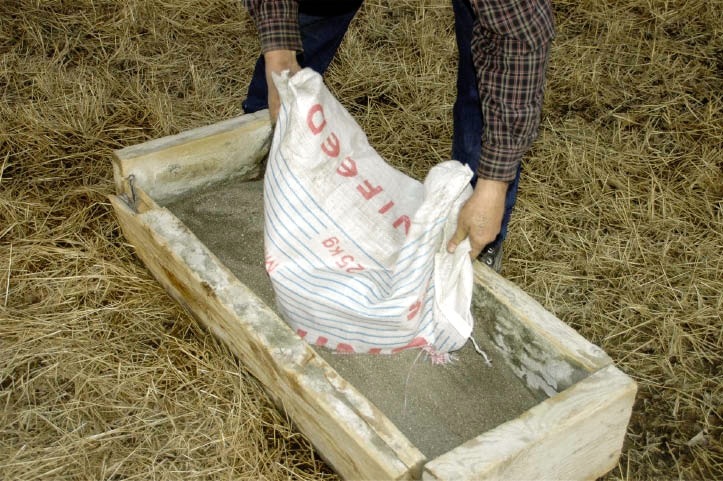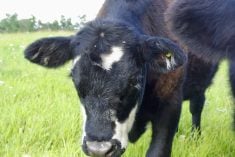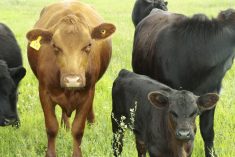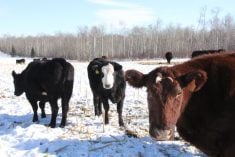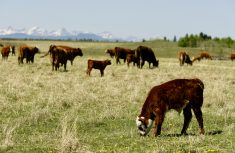Choosing the right mineral for the cow herd is not an easy task as there is a wide variety of choices including loose minerals that vary in calcium and phosphorus concentration, molasses-based tubs and blocks, trace mineral salts and numerous commercial protein supplements. To further complicate matters, within a given supplement category, you will find variability in terms of specific mineral concentrations, mineral bioavailability and price. When faced with this complexity, many producers settle on a product with the lowest price tag. With this article I would like to explore why price is not always the best option when selecting a mineral supplement.
Read Also

Body condition, nutrition and vaccination for brood cows
One of the remarkable events of the past century related to ranching has been the genetic evolution of brood cows….
First let’s look at the mineral needs of your herd. One reason there are so many types of minerals on the market is that like other nutrients, your cow’s mineral requirements change with stage of pregnancy. Two critical periods are the last trimester of pregnancy and the 60-day period from calving through breeding. While mineral needs are not as high for the remainder of the year, nevertheless they are still important. Several companies have developed programs where specific mineral formulations are fed during each of these periods. These include trace mineral salt formulations, range minerals, late gestation/calving minerals and minerals for the breeding herd. Adjustments are made for changes in specific mineral requirements such as magnesium and calcium, to compensate for reduced pasture concentration of specific minerals with advancing plant maturity or the addition of a certain percentage of chelated minerals for situations where there is a known deficiency.
- More from Canadian Cattlemen’s John McKinnon: With calves at $2 – attention to detail pays dividends!
Another important consideration is the mineral content of your forage, particularly with respect to choosing a 1:1 or 2:1 mineral. Legumes such as alfalfa and legume/grass mixtures tend to be high in calcium (i.e. 1.0 per cent to 2.0 per cent) and intermediate (0.3 per cent to 0.4 per cent) in phosphorus content. Grass-type forages and cereals cut for greenfeed generally contain equal parts calcium and phosphorus (0.2 per cent to 0.3 per cent). The choice of which calcium/phosphorus mineral to feed will depend on which feed category or mix of feeds you are using.
Perhaps the most important consideration is firsthand knowledge of the area where you raise cattle, both in terms of soil and water mineral content. Mineral deficiencies in cattle can be classified as primary or secondary. Primary deficiencies result from low mineral concentrations in the forage which in turn results from mineral deficiencies in the soil. An example is selenium which is low in forages grown on grey wooded soils. Selenium deficiency in pregnant beef cows results in white muscle disease in newborn calves and can be prevented by strategic supplementation either through a mineral feeding program or injection of selenium/vitamin E.
Secondary deficiencies result from interactions between different minerals. Minerals exist in a variety of charged states, both positive and negative. These charges result in a variety of potential interactions that can tie up specific minerals and result in deficiency situations. An example is secondary copper deficiency which can result from high soil molybdenum levels and/or high water sulphate concentrations. A general rule of thumb is that the ratio of copper to molybdenum in the diet should be greater than 5:1. Ratios less than 2:1 are a good indication of an induced copper deficiency and call for specific supplementation strategies. High dietary sulphur levels will also tie up copper. In this case, both the sulphur level of the feed and the water needs to be considered when calculating total sulphur intake. Water sulphate levels less than 500 parts per million are considered ideal, while levels higher than 1,000 parts per million are a concern for copper deficiency as well as other issues such as polioencephalomalacia. Total dietary sulphur levels greater than 0.4 per cent (dry matter basis) have been shown to induce copper deficiency in beef cows.
Elevated forage potassium levels is another example where mineral interactions can result in production losses. High dietary potassium can reduce the cow’s absorption of magnesium. This can result in “grass tetany or staggers.” Cattle with this disease show many neurological symptoms including hyperexcitability, inco-ordination, muscular spasms, and paralysis and in severe cases coma leading to death. High dietary potassium levels also impair the cow’s ability to mobilize calcium stores at or near calving. This can lead to an increased incidence of milk fever with many of the same symptoms observed with grass tetany. Forage potassium levels vary with plant species, use of potassium fertilizers (i.e. manure application) and with environmental conditions. For example cereal greenfeed grown as a replacement for hay during periods of drought can have elevated potassium levels, particularly when grown on land that has had manure applied. When fed as the primary forage source, this high potassium forage increases the risk of both of these diseases at or near calving.
As you can see there are many factors to consider when choosing the right mineral supplement for your herd. The mineral supplement with the cheapest price tag will not always meet your requirements. Knowledge of local conditions and forage and water mineral content are a starting point. To truly fine tune the decision, I suggest working with a qualified nutritionist who knows your area and your operation.
John McKinnon is a beef cattle nutritionist at the University of Saskatchewan


